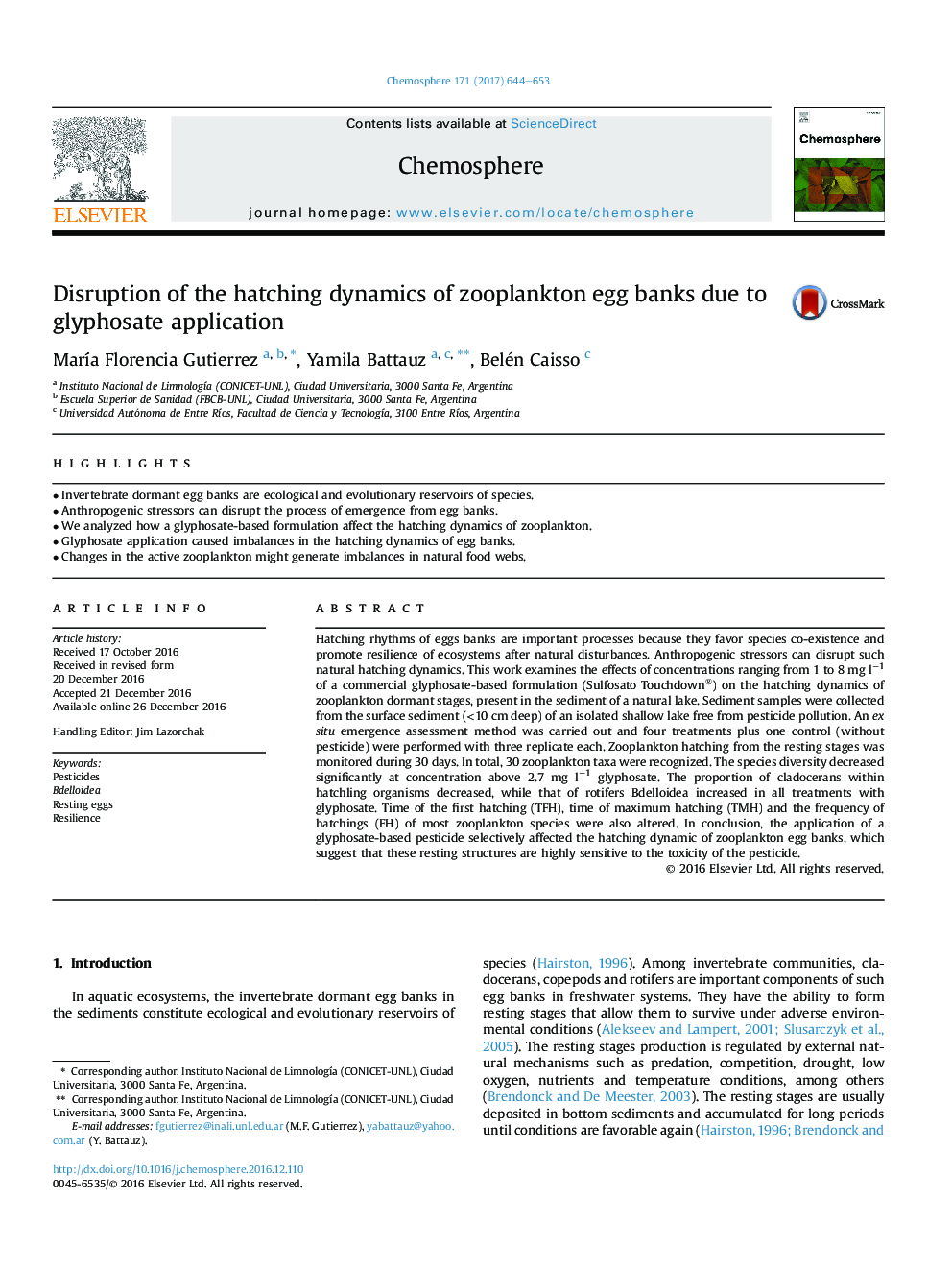| Article ID | Journal | Published Year | Pages | File Type |
|---|---|---|---|---|
| 5746376 | Chemosphere | 2017 | 10 Pages |
â¢Invertebrate dormant egg banks are ecological and evolutionary reservoirs of species.â¢Anthropogenic stressors can disrupt the process of emergence from egg banks.â¢We analyzed how a glyphosate-based formulation affect the hatching dynamics of zooplankton.â¢Glyphosate application caused imbalances in the hatching dynamics of egg banks.â¢Changes in the active zooplankton might generate imbalances in natural food webs.
Hatching rhythms of eggs banks are important processes because they favor species co-existence and promote resilience of ecosystems after natural disturbances. Anthropogenic stressors can disrupt such natural hatching dynamics. This work examines the effects of concentrations ranging from 1 to 8 mg lâ1 of a commercial glyphosate-based formulation (Sulfosato Touchdown®) on the hatching dynamics of zooplankton dormant stages, present in the sediment of a natural lake. Sediment samples were collected from the surface sediment (<10 cm deep) of an isolated shallow lake free from pesticide pollution. An ex situ emergence assessment method was carried out and four treatments plus one control (without pesticide) were performed with three replicate each. Zooplankton hatching from the resting stages was monitored during 30 days. In total, 30 zooplankton taxa were recognized. The species diversity decreased significantly at concentration above 2.7 mg lâ1 glyphosate. The proportion of cladocerans within hatchling organisms decreased, while that of rotifers Bdelloidea increased in all treatments with glyphosate. Time of the first hatching (TFH), time of maximum hatching (TMH) and the frequency of hatchings (FH) of most zooplankton species were also altered. In conclusion, the application of a glyphosate-based pesticide selectively affected the hatching dynamic of zooplankton egg banks, which suggest that these resting structures are highly sensitive to the toxicity of the pesticide.
